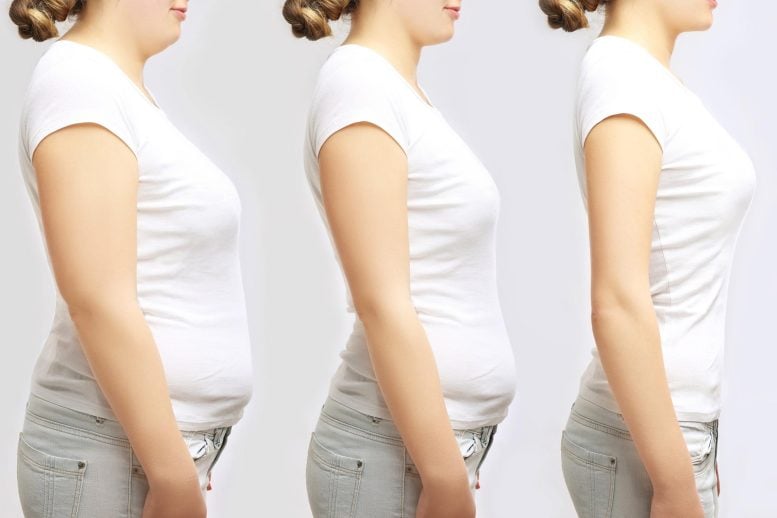
Researchers found that by lowering inflammation, cold temperatures can help in the fight against obesity and related metabolic diseases.
Brown adipose tissue is activated by the cold to release anti-inflammatory compounds.
Over 40% of adult Americans are obese, a complicated condition that raises the risk of diabetes, heart disease, and several types of cancer. By creating low-grade chronic inflammation and the buildup of immune cells in insulin-sensitive tissues, obesity is one factor that can contribute to other health issues. Scientists believe that reversing, or “resolving,” this chronic inflammation might delay the emergence of obesity-related diseases like diabetes and perhaps make it easier to lose weight.
Researchers from Brigham and Women’s Hospital and the Joslin Diabetes Center discovered that in diet-induced obese mice, exposure to cold temperatures improved insulin sensitivity and glucose tolerance while resolving obesity-induced inflammation. Their findings were reported in a new paper that was published in Nature Metabolism.
The research team also found that the mechanism was dependent on brown adipose tissue, which is commonly referred to as “good fat,” releasing a naturally occurring molecule called Maresin 2 in response to cold stimulation. Brown adipose tissue is known as an active endocrine organ because it secretes molecules that communicate with other tissues and manage metabolism. It also aids in the release of stored energy and could promote weight reduction and metabolic health.
“Extensive evidence indicates that obesity and metabolic syndrome are linked with chronic inflammation that leads to systemic insulin resistance, so interrupting inflammation in obesity could offer promising therapies for obesity-related disease,” said co-corresponding author Yu-Hua Tseng, Ph.D., a senior investigator in the Section on Integrative Physiology and Metabolism at Joslin Diabetes Center and professor of medicine at Harvard Medical School.
“We discovered that cold exposure reduced inflammation and improved metabolism in obesity, mediated at least in part by the activation of brown adipose tissue. These findings suggest a previously unrecognized function of brown adipose tissue in promoting the resolution of inflammation in obesity.”
In two earlier experiments, Tseng and colleagues found that brown fat may be activated by cold exposure to create certain lipid mediators that control nutrient metabolism. In the current study, the researchers identified a novel role for a lipid mediator produced from brown fat to resolve inflammation.
In the current study, the researchers created a mouse model that, when given a standard high-fat, Western diet, develops obesity.
When the animals were exposed to a cold environment (around 40 degrees Fahrenheit), the researchers observed that the animals’ insulin sensitivity and glucose metabolism improved and their body weight decreased, compared to control animals maintained at a thermoneutral zone – the environmental temperature where the body does not need to produce heat for maintaining its core body temperature.
What’s more, the scientists also noticed a profound improvement in inflammation, as measured by reduced levels of a major inflammatory marker.
“We found that brown fat produces Maresin 2, which resolves inflammation systemically and in the liver,” said co-corresponding author Matthew Spite, Ph.D., a lead investigator at Brigham and Women’s Hospital and Associate Professor of Anesthesia at Harvard Medical School. “These findings suggest a previously unrecognized function of brown adipose tissue in promoting the resolution of inflammation in obesity via the production of this important lipid mediator.”
Moreover, these findings also suggest that Maresin 2 could have clinical applications as a therapy for patients with obesity, metabolic disease, or other diseases linked to chronic inflammation; however, the molecule itself breaks down quickly in the body. Tseng and colleagues seek a more stable chemical analog for clinical use.
The team notes a shortcut to improved metabolic health may already exist. Multiple human studies conducted at Joslin and elsewhere show that exposure to mildly cold temperatures (50 to 55 degrees Fahrenheit) has been shown to be sufficient to activate brown adipose tissue and improve metabolism, though the mechanisms are not well understood.
Reference: “Brown adipose tissue-derived MaR2 contributes to cold-induced resolution of inflammation” by Satoru Sugimoto, Hebe Agustina Mena, Brian E. Sansbury, Shio Kobayashi, Tadataka Tsuji, Chih-Hao Wang, Xuanzhi Yin, Tian Lian Huang, Joji Kusuyama, Sean D. Kodani, Justin Darcy, Gerson Profeta, Nayara Pereira, Rudolph E. Tanzi, Can Zhang, Thomas Serwold, Efi Kokkotou, Laurie J. Goodyear, Aaron M. Cypess, Luiz Osório Leiria, Matthew Spite, and Yu-Hua Tseng, 27 June 2022, Nature Metabolism.
DOI: 10.1038/s42255-022-00590-0
This work was supported in part by US National Institutes of Health (NIH) grants (R01DK122808, R01DK077097, R01DK102898, R01HL106173, R01DK099511, R01DK112283, P30DK0368360) and by US Army Medical Research grant W81XWH-17-1-0428; the Manpei Suzuki Diabetes Foundation in Japan; grant 2019/20554-7 from The São Paulo Research Foundation, FAPESP; an American Diabetes Association post-doctoral fellowship (1-16-PDF-063); the Sao Paulo Research Foundation (FAPESP) grants 2017/02684 and 2019/26008-4.
Spite and Tseng are inventors of a pending provisional patent application related to Maresin 2 and metabolic therapeutics.


0 Comments